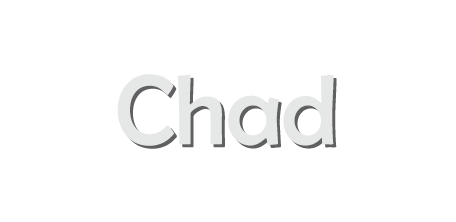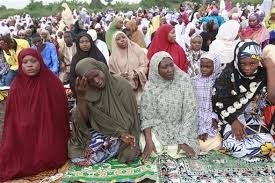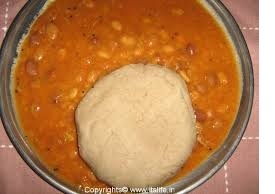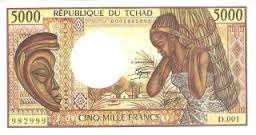
Chad, or officially known as the Republic of Chad has been known as a cradle of humankind ever since the discovery of a 7 million year old human skull, now known as Toumai (hope of life) . The Republic of Chad is sometimes also known as Jumhuriyat Tshad or Republique du Tchad. Its cave paintings are engraved with elephants, camels, rhinoceros, giraffes and cattle which clearly depicts that Chad was once teeming with wildlife. The country gained its independence from the French rule on 11th August, 1960. It is named after the Lake Chad which is one of the most beautiful and natural wonders of the world and the nation’s greatest tourist attraction. A part of the North central Africa, Chad is sometimes referred to as the Dead Heart of Africa because of its proximity with the deserts. People of Chad are accustomed to a sedentary kind of lifestyle. The rural areas, people lead a very easy going life whereas the urban lifestyle is full of life and quite vibrant. Let us learn more about Chad.
Chad is a landlocked country in Central Africa and is surrounded by countries such as Cameroon (1,116 km), Central African Republic (1,556 km), Libya (1,050 km), Niger (1,196 km), Nigeria (85 km) and Sudan (1,403 km). Out of its total area of 1,284 million sq. km, land occupies about 1,259,200 sq. km whereas the area occupied by water is about 24,800 sq. km. It lies between the geographic coordinates 15°N latitude and 19°E longitude. Comparatively, it ranks 21st in the world and is slightly bigger than three times the size of California.

Chad enjoys a tropical climate in the south and an extreme climate in the north. Its terrain is broad and there are arid plains at the centre, deserts in the north, mountains in the northwest and lowlands in the south. The lowest point of elevation is Djourab at 160 m and the highest point is Emi Koussi at 3,415 m. Natural resources of Chad include petroleum, uranium, natron, kaolin, fish, gold, limestone, sand, gravel and salt. The nation faces natural hazards such as hot dry harmattan winds in the north, periodic droughts, locusts and plagues. Inadequate supply of potable water and improper waste disposal in the rural areas contribute to the soil and water pollution and desertification

Most of the flora and fauna respond to the climatic zones in Chad. There are date palms grown in the southern desert region of Chad. The central or Sahelian region has palm groves and acacia whereas savannah type grasslands are found in the northern areas of Chad. Acacias, baobab, desert date, palms, African myth and Indian jujube are found near Lake Chad region. Aquatic plants such as reeds, papyrus and water lilies are also found in Lake Chad. Elephants, lions, buffalo, hippopotamuses, rhinoceroses, giraffes, antelopes, leopards, cheetahs, hyenas, gazelle, otter, sitatunga, kob, gerbil and rock python are found in small numbers. Endangered species of vultures and falcons have also been reported.

Men dominate their roles in the government, military and public life while women look after the responsibilities of the family, household tasks and child care. The Islamic groups in the northern region are conservative as compared to the Christian group in the south and the cities. However, the Muslim women are not forced to wear the veil. Polygamy and paying the bride at marriages is common among both the Islamic as well as the Sara group of Chad. Nuclear families living independently are rare, except in towns and staying together with extended families or joint families of married brothers are common. French inspired laws or Sharia (Islamic law) is followed depending upon the region. People of Chad belong to different cultural and religious backgrounds but observe the same respect for their community of elders, moderation and reserve in public life. Greetings and leave–taking constitute an important part of meeting.

Chad has two official languages, the French and the Arabic. However, Sara is spoken by the Chadians living in the south and there are more than 120 different languages and dialects. About 53% of the Chadians are Muslims, followed by the Catholics, Protestants, animists and a minor population of the atheists.

Being a country of many diverse cultures and ethnic groups, there is no uniform pattern of food and consumption in Chad. The most common dish is a type of set–grain porridge made of sorghum or millet flour and served with sauces that have meat, dried fish tomatoes, onion and spices. In the south, there is no fish and less consumption of milk products. Chadians from the south use more forests products, tubers, spices and fruits. Maize, manioc, potatoes, rice, sesame and some bean species are the other staple foods of Chad.

The landlocked location of Chad results in high transportation costs for imported goods and increases its dependence on its neighbouring countries. Oil and agriculture is the mainstay of the economy but limited infrastructure, lack of trained workers, extensive government bureaucracy and corruption are some of the significant obstacles. Its agricultural products are cotton, sorghum, millet, peanuts, rice, potatoes, cassava, cattle, sheep, goats and camels. Industries that contribute to its development include oil, cotton textiles, meatpacking, brewing, natron (sodium carbonate) soap, cigarettes and construction. It exports oil, cattle, cotton and gum arabic to US, Japan and India whereas it imports machinery and transportation equipments, industrial goods, foodstuff and textiles from China, Cameroon, France, Belgium and India.

G Kowledge of | 0 Comments >>
0 Comments
Leave Comment
Your email address will not be published. Required fields are marked.